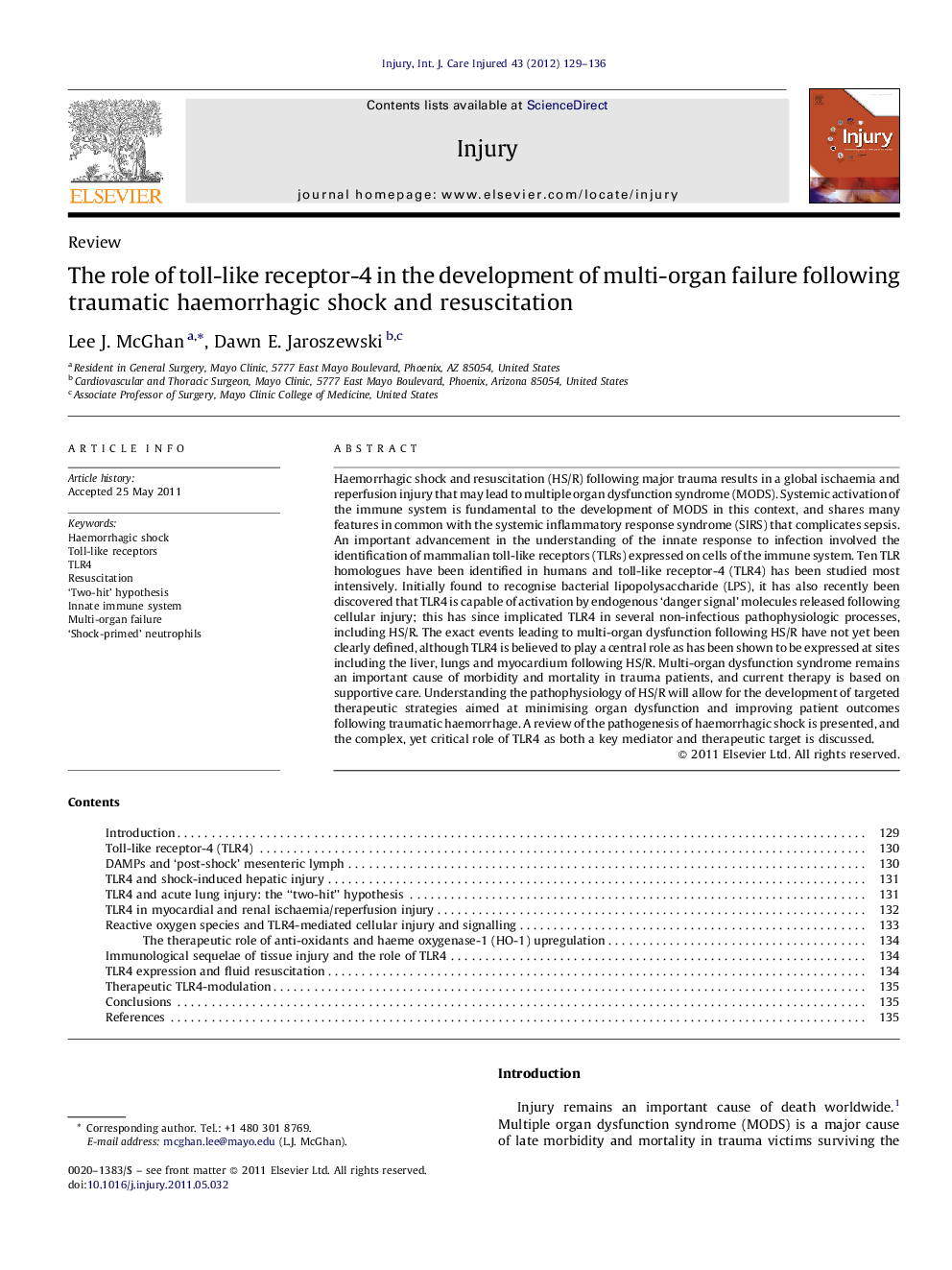| کد مقاله | کد نشریه | سال انتشار | مقاله انگلیسی | نسخه تمام متن |
|---|---|---|---|---|
| 3239758 | 1206019 | 2012 | 8 صفحه PDF | دانلود رایگان |

Haemorrhagic shock and resuscitation (HS/R) following major trauma results in a global ischaemia and reperfusion injury that may lead to multiple organ dysfunction syndrome (MODS). Systemic activation of the immune system is fundamental to the development of MODS in this context, and shares many features in common with the systemic inflammatory response syndrome (SIRS) that complicates sepsis. An important advancement in the understanding of the innate response to infection involved the identification of mammalian toll-like receptors (TLRs) expressed on cells of the immune system. Ten TLR homologues have been identified in humans and toll-like receptor-4 (TLR4) has been studied most intensively. Initially found to recognise bacterial lipopolysaccharide (LPS), it has also recently been discovered that TLR4 is capable of activation by endogenous ‘danger signal’ molecules released following cellular injury; this has since implicated TLR4 in several non-infectious pathophysiologic processes, including HS/R. The exact events leading to multi-organ dysfunction following HS/R have not yet been clearly defined, although TLR4 is believed to play a central role as has been shown to be expressed at sites including the liver, lungs and myocardium following HS/R. Multi-organ dysfunction syndrome remains an important cause of morbidity and mortality in trauma patients, and current therapy is based on supportive care. Understanding the pathophysiology of HS/R will allow for the development of targeted therapeutic strategies aimed at minimising organ dysfunction and improving patient outcomes following traumatic haemorrhage. A review of the pathogenesis of haemorrhagic shock is presented, and the complex, yet critical role of TLR4 as both a key mediator and therapeutic target is discussed.
Journal: Injury - Volume 43, Issue 2, February 2012, Pages 129–136